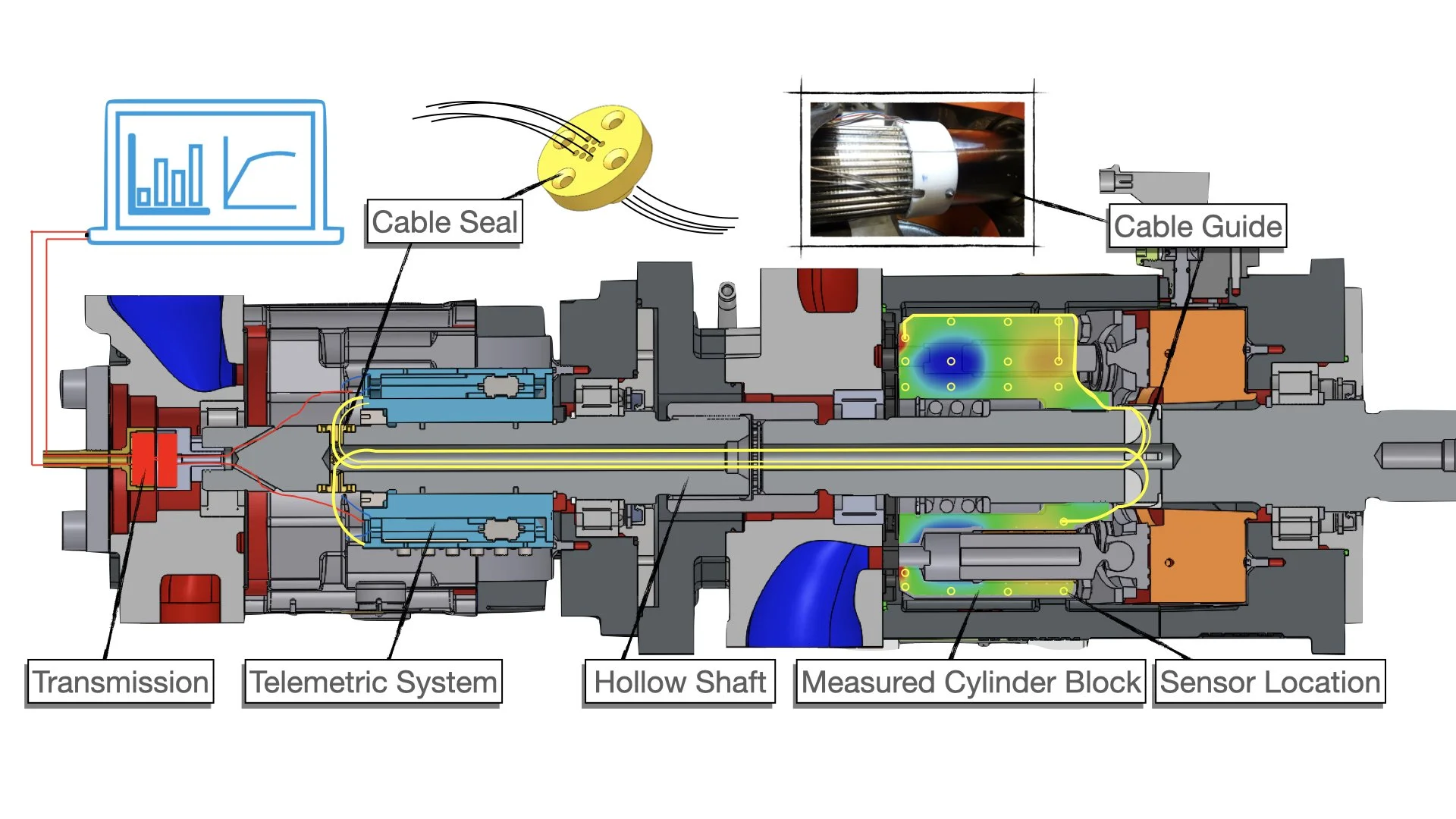Thermal Condition Monitoring
Using Caspar FSTI to build a digital twin in combination with simple temperature sensors.
To prepare today's fluid power systems for the future digitalization of the industry, it is necessary to improve the information available regarding the current condition of crucial components of the system. Positive displacement machines, which constitute the core of any hydraulic system, play a vital role in this process. Future smart systems will require more information about the current state of the pump such as power usage and efficiency. Current condition monitoring approaches utilize an array of sensors that need to be sampled at high frequency. The transmission, storage, and post processing of this vast amount of data requires an enormous number of resources, especially if exercised at scale. Previous work conducted at the Institute of Mechatronics Engineering at TU Dresden has demonstrated that measuring the temperature in the lubricating gaps can allow for a deeper insight into the tribological mechanisms in these interfaces. Not only can the gap height, viscous friction and leakage be determined from this information, but also crucial information such as wear level and expected component lifespan can be derived from temperature levels with adequate reference models [1]–[4]
The cylinder block is the heart of the rotating kit, connecting all moving parts while housing the displacement chamber and pistons. Two of the three main bearings are directly associated with the cylinder block, and the third, the slipper/swash plate bearing, is indirectly related via the leakage path through and the forces acting on the piston. Caspar FSTI is able to predict both efficiency and temperature of parts and oil.
By combining Caspar FSTI simulation results and temperature measurements, an innovative thermal condition monitoring approach can be achieved. Caspar FSTI provides the digital twin: Temperature trends vs. efficiency for a whole suite of different boundary conditions - including part tolerances and wear in. The temperature sensors - which can have a very low sample rate and reasonable accuracy of ±0.5K - can provide the necessary input for the model. Currently a pressure sensor is needed for reference, however the newest results indicated that simply installing 3 temperature sensors - Inlet, Outlet, Block - are sufficient to predict the entire pump efficiency. Stay tuned!
Meanwhile you can watch the latest presentation about the topic or read my paper here.
Watch the presentation form the 2024 IFK conferences about Thermal Analysis in Piston Pumps using Caspar FSTI as a digital twin
















